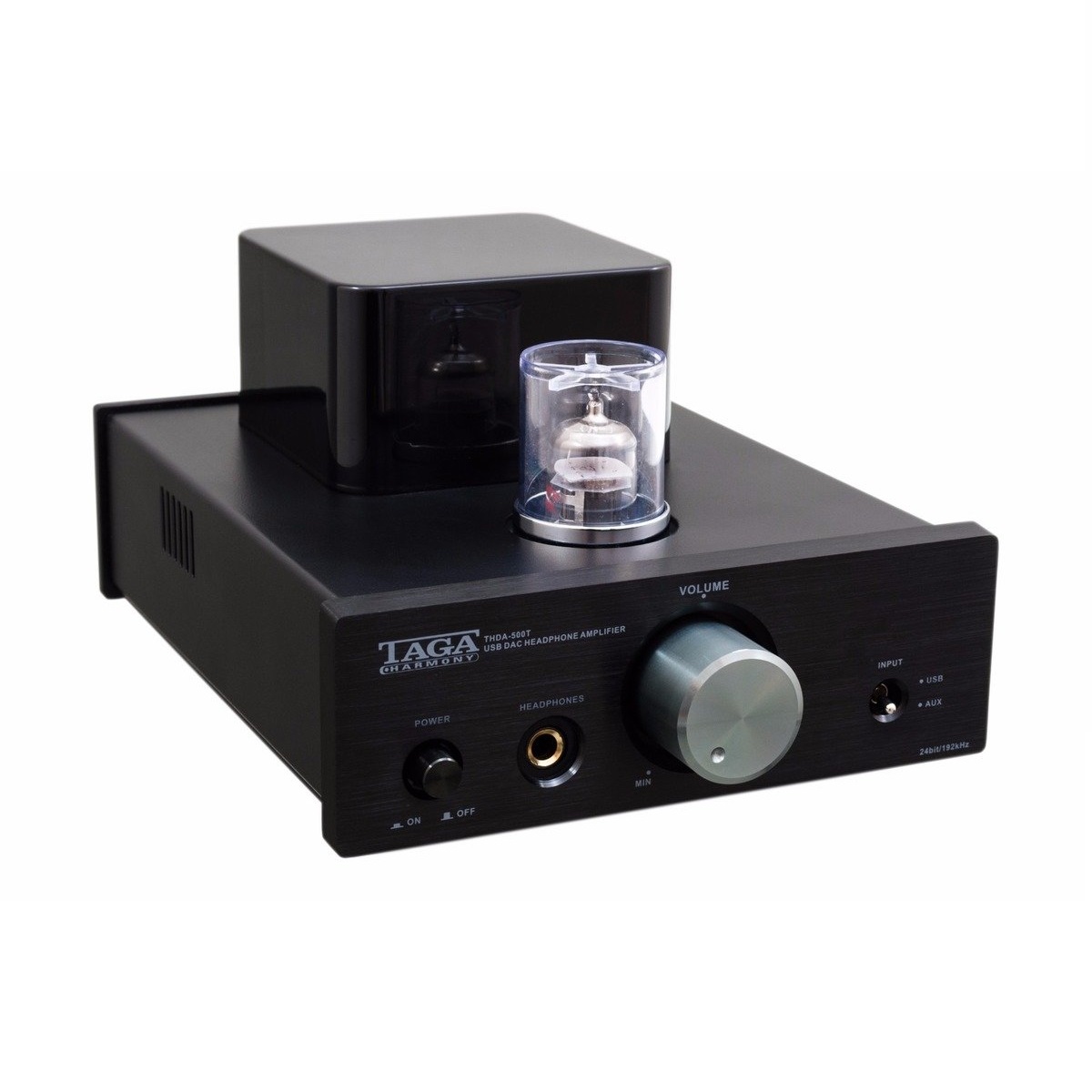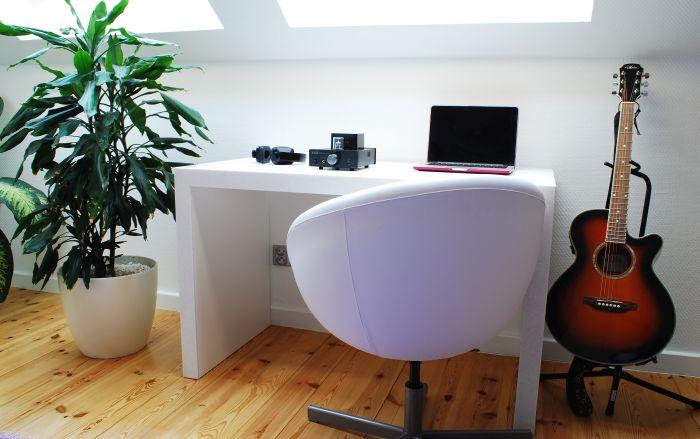THDA-500T
The art of delivering the best music – directly to your ears!
This midi Class A vacuum tube headphone amplifier provides a clear, rich and powerful sound.
The THDA-500T is a hybrid vacuum tube/solid state headphone amplifier which utilizes discrete MOSFET outputs and a 12AX7 vacuum tube.
Pure Class A, single ended design with no negative feedback offers the best sound performance and powerful sound.
The THDA-500T uses only fully discrete circuits with audiophile-grade Wima coupling and Rubycon power supply capacitors.
Thanks to a 3.5V stereo preamp output you can connect your THDA-500T directly to a power amplifier or powered speakers.
A precisely made, extremely quiet and stable, linear internal power supply supports ultra-high-end sound performance.
The removable IEC power cable gives you an option to upgrade your system with a premium audiophile power cable in any time.
You can connect it directly to your computer through a USB input and thanks to the built-in high-resolution premium USB-DAC 24bit/192kHz (Cirrus Logic CS4344) you are able to change your digital music to a thrilling music experience.
Stunning sound embedded in a very rigid, non-resonant and luxurious steel-aluminum casing (10mm front and 6mm rear aluminum panels).
Hybrid Amplifier
What does it mean and why does TAGA Harmony use this approach?
Hybrid means a combination of two different techniques to create an amplifier in one device: the World of tubes and the World of transistors.
TAGA Harmony amplifiers use vacuum tubes in the preamp section and transistors in the power stage. This results in tube, soft and analog-like sound character and at the same time high dynamics and power provided by transistors, which is usually a weak point of pure tube designs.
The sound of TAGA Harmony hybrid amplifiers is not only silky and rich but also powerful and dynamic. In addition, hybrid amplifiers compared to pure tube amps have better abilities to properly drive different kind of headphones.
After being turned on a hybrid amplifier requires to warm up its tubes to reach its full sound capabilities – it usually takes from 5 to 15 minutes depending on model and room temperature.



